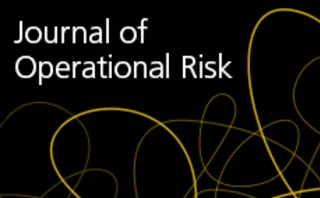Technical paper/Systemic risk
Detecting changes in asset co-movement using autoencoders
ARR aims to anticipate volatility patterns to provide signals for risk management and trading
Quantifying systemic risk using Bayesian networks
Creditworthiness of individual entities may offer an insight into systemic risk of financial markets
Supervisory stress testing for central counterparties: a macroprudential, two-tier approach
This paper examines the role of supervisory stress testing of central counterparties (CCPs). A key message is that the design of supervisory stress tests (SSTs) should be tailored to CCPs’ roles, risk profiles and financial structures.
Measuring the systemic risk of China’s banking sector: an application of differential DebtRank
This paper investigates the systemic risk of China’s banking sector via network analysis and differential DebtRank from 2007 to 2016.
Default cascades and systemic risk on different interbank network topologies
This paper examines the relationship between the topology of interbank networks and their ability to propagate localized, idiosyncratic shocks across the banking sector via banks’ interbank claims on one another.
Who pays? Who gains? Central counterparty resource provision in the post-Pittsburgh world
In this paper, the authors develop a conceptual framework to examine whether the regulatory changes since the Pittsburgh Summit could be a catalyst for reconsidering the structure of clearing houses.
The centrally cleared interest rate derivatives market: how are clients changing the risk perspective?
This paper analyzes counterparty relationships within both direct (house) and client clearing in the interest rate derivatives market in the European Union.
Systemic risk in the financial system: capital shortfalls under Brexit, the US elections and the Italian referendum
This paper uses SRISK to quantify the estimated capital shortfalls of financial institutions under three relevant stress events that occurred in 2016: Brexit, the Trump election and the Italian referendum.
Harmonic distances, centralities and systemic stability in heterogeneous interbank networks
This paper investigates the effects of contagion in interbank-lending networks, with a special focus on the theoretical grounding of centrality measures.
Operational risk: a forgotten case study
This paper is a historical case study of the GAS scandal and is the first to analyze it from the perspective of operational risk.
The CoCVaR approach: systemic risk contribution measurement
In this paper, the authors propose a measure for systemic risk, CoCVaR, the conditional value-at-risk (CVaR) of the financial system conditional on an institution being in financial distress.
Monitoring transmission of systemic risk: application of partial least squares structural equation modeling in financial stress testing
This paper illustrates how the transmission of systemic risk from shadow banking to the regulated banking sector can be modeled using partial least squares structural equation modeling in an effort to help regulators better monitor and manage contagion.
Identifying complex core–periphery structures in the interbank market
This paper proposes a framework to identify the structure of a financial network and its evolution over time, and presents an application to an interbank market with complete actual data.
Systemic risk management in financial networks with credit default swaps
In this paper the authors study insolvency cascades in an interbank system, in which banks are permitted to insure their loans with credit default swaps sold by other banks.
Behavioral risks at the systemic level
By comparing the Libor and FX benchmark manipulation scandals, this paper describes how misbehavior emerged independently in both of these markets and the conditions that permitted the misconduct to survive and thrive.
How the interbank market becomes systemically dangerous: an agent-based network model of financial distress propagation
In this paper, the authors study the stability of the interbank market to exogenous shocks using an agent-based network framework.
Standardized measurement approach: is comparability attainable?
This paper considers the claim of improved comparability of SMA outcomes by considering the ability to compare “internal loss experience” between banks.
Asset correlations and procyclical impact
The authors examine the behavior of asset correlations for companies in Taiwan under the Basel Accord’s asymptotic single-risk-factor approach.
Systemic risks in CCP networks
Barker, Dickinson, Lipton and Virmani propose a credit and liquidity risk model for CCPs
Interbank network and regulation policies: an analysis through agent-based simulations with adaptive learning
The authors develop an agent-based model to study the impact of a broad range of regulation policies on the banking system.
NetMES: a network based marginal expected shortfall measure
This paper aims to build novel measures of systemic risk that take the multivariate nature of the problem into account by means of network models.
The econometrics of Bayesian graphical models: a review with financial application
This paper provides a review of graphical modeling and describes potential applications in econometrics and finance.









